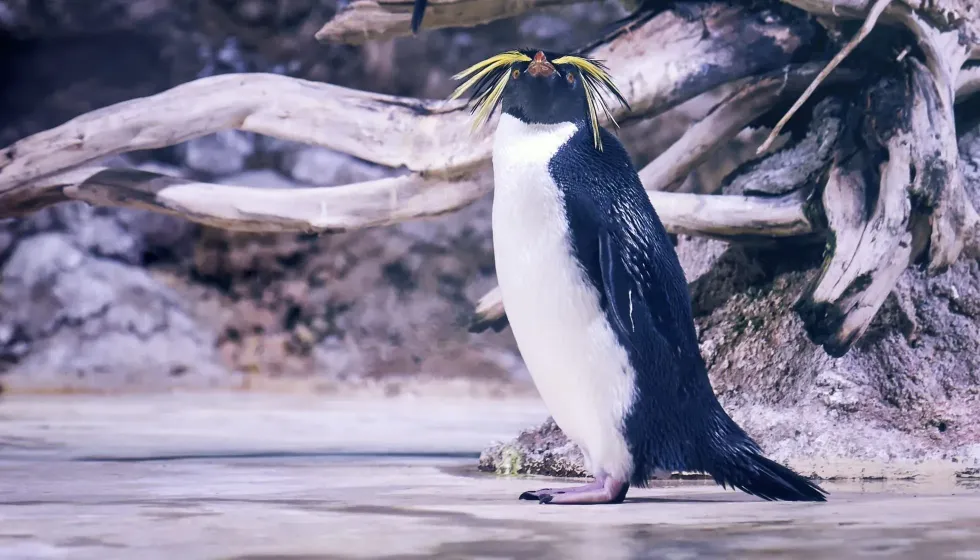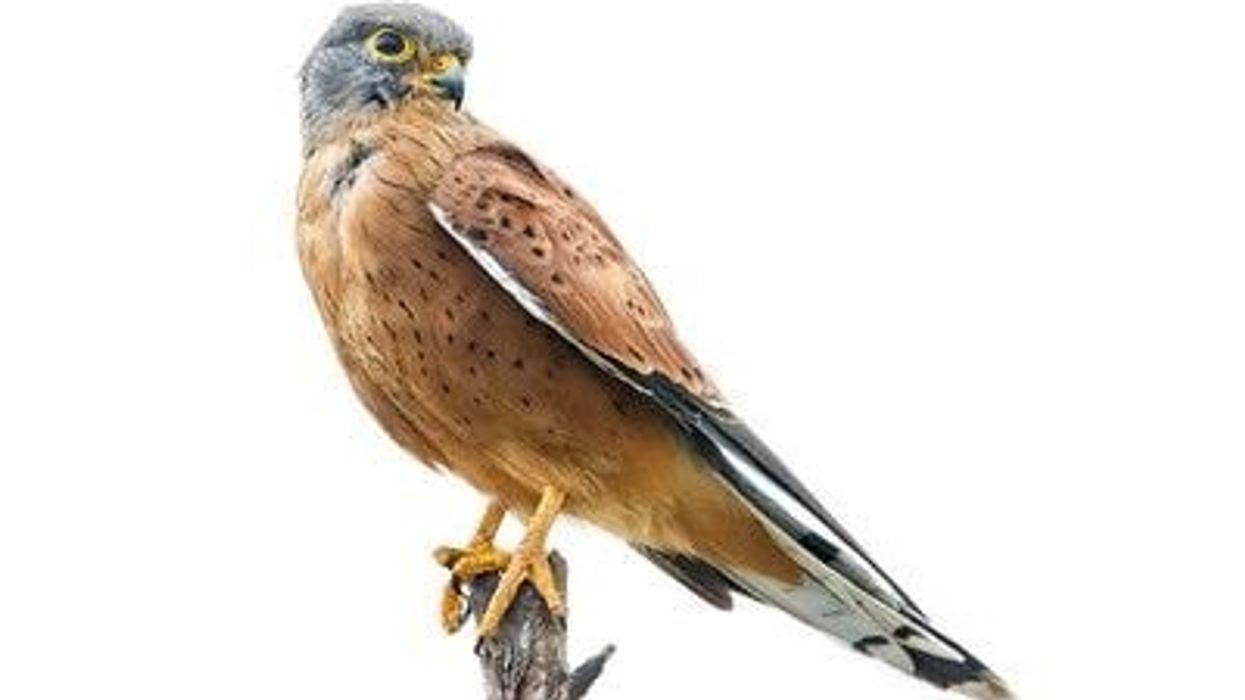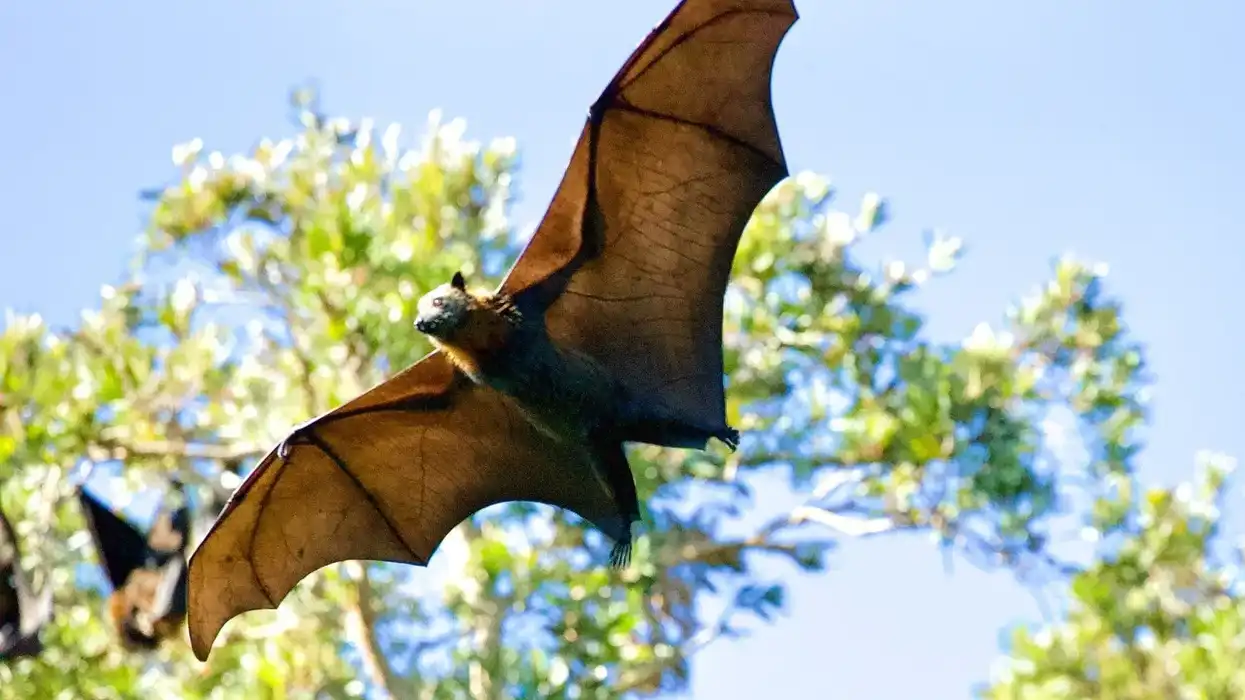Northern rockhopper penguin is a species of penguin native to the southern Indian Ocean islands and the South Atlantic Ocean islands. It is found on Gough Island, Tristan da Cunha Island, Amsterdam Island, and St. Paul Island.
It is one of the three subspecies of the rockhopper penguin species, which also consist of the eastern rockhopper penguin (Eudyptes chrysocome filholi) and the southern rockhopper penguin. The northern rockhopper penguin is named for its habit of hopping rocks on its feet and not sliding on its belly.
It also has a crest or crown on its head, made up of long yellow feathers. It is a very social bird that lives in big colonies.
Being flightless, it forages in the sea for squid, crustaceans, octopus, and small fish. It forages in groups with highly synchronized preying movements.
As per the IUCN, the northern rockhopper penguin is an Endangered species that shows a decreasing population trend. There are only about 413,700 adult individuals left in the world.
For more relatable content, check out these African penguin facts and Atlantic puffin facts for kids.
Northern Rockhopper Penguin Interesting Facts
What type of animal is a northern rockhopper penguin?
The northern rockhopper penguin (Eudyptes moseleyi) is a flightless bird.
What class of animal does a northern rockhopper penguin belong to?
The northern rockhopper penguin (Eudyptes moseleyi) belongs to the Aves class of animals.
How many northern rockhopper penguins are there in the world?
There are about 413,700 mature individuals of the northern rockhopper penguin (Eudyptes moseleyi) species in the world.
Where does a northern rockhopper penguin live?
The northern rockhopper penguin species lives in the South Atlantic Islands, specifically Gough Island and Tristan da Cunha Island. It is also found in the southern Indian Ocean islands, in Amsterdam Island and St. Paul Island.
What is a northern rockhopper penguin's habitat?
The northern rockhopper penguin species choose rocky cliffs, steep gullies, lava fields, and rocky shores as their breeding habitat. It also breeds in lands with scrub and scattered grasses. For nesting, the northern rockhopper penguin inhabits natural freshwater pools and lagoons where it can drink and bathe in the water.
The northern rockhopper penguin being a marine species forages at sea in the winter and returns ashore for spring breeding.
Who does a northern rockhopper penguin live with?
Northern rockhoppers are very sociable animals that live in large breeding colonies. They are known to fish in groups with highly synchronized movements.
How long does a northern rockhopper penguin live?
The northern rockhopper penguin's lifespan is 9-12 years.
How do they reproduce?
Northern rockhoppers reproduce by mating and laying two eggs.
Northern rockhopper penguins form monogamous breeding pairs and mate for life. Males of the pairs arrive at the colony first to establish nesting sites, followed by females 10 days later.
There are territorial and courtship displays among males. Mates perform several displays like bowing, pointing beaks skywards while extending flippers, head-swinging, and quivering. Copulation is done by the pairs at the nesting site followed by preening or resting.
The two whitish eggs are laid in early September over a period of four days and they hatch in mid-October. The nest is near rocky areas that also have vegetation.
The nest is built beneath or near a rock using twigs and stones. The incubation of the two eggs is done by the female while the male goes feeding and vice versa once the male returns. Only one chick is raised.
The female comes back for hatching to feed the chick and the male guards the chick. Parents return to sea after 20 days and the chick fledges 10 weeks post-hatching.
What is their conservation status?
The conservation status of the northern rockhopper penguin species (E. moseleyi) according to the International Union for Conservation of Nature is Endangered.
Northern Rockhopper Penguin Fun Facts
What does a northern rockhopper penguin look like?
Adult northern rockhoppers have white underparts and slate-gray upperparts. The underside of their flippers is white and partially black near the tip and the edge. Each flipper measures about 6.7-7.1 in (17-18 cm). One of the most noticeable features is the occipital black crest which elongates itself above the eyes into pale yellow feathers.
These crested penguins have brownish-red bills and deep-red eyes. They also have webbed feet and legs which are pink. There is little sexual dimorphism with males being bigger than females and have much thicker bills.
The juvenile penguin has a yellowish line above its eyes and a shorter occipital crest than the adults. The chin of the juvenile is mottled gray and pale.
The upper parts of the chick are dark gray and the underparts are white. It also has a black bill with a whitish tip. The eyes of the juvenile chick are brown.

How cute are they?
Northern rockhopper penguins are extremely cute animals. These crested penguins are as adorable if not more adorable than any other penguin species. They are a beautiful black and white color and have gorgeous yellow crowns that make them look like royalty. They also mate for life. and live in large social groups.
How do they communicate?
The northern rockhoppers communicate via calls. They are often very noisy since they are capable of producing braying and raucous sounds. High-pitched squeaks are heard in between pauses.
The calls can be characterized as unmelodious and shrill. This species uses a total of four calls, namely the contact call, the alarm call, the mating call, and recognition calls with juvenile chicks. Adults also use visual communication with chicks so they can recognize each other.
How big is a northern rockhopper penguin?
The northern rockhopper penguin species is 17.7-22.8 in (45-58 cm) long which makes it three to five times bigger than the canyon wren and four times smaller than the ostrich.
How fast can a northern rockhopper penguin run?
Northern rockhopper penguins are not very fast on the land, they hop about on rocky cliffs in their breeding colonies. When swimming, they move at speeds of 4.4 mph (7 kph).
How much does a northern rockhopper penguin weigh?
Northern rockhopper penguins may weigh anywhere between 4.4-7.7 lb (2-3.5 kg).
What are the male and female names of the species?
Northern rockhopper penguins are birds and not mammals, so males are called cocks, and females are called hens. A group of penguins seen on land may be called a waddle and a group in the water may be called a raft.
What would you call a baby northern rockhopper penguin?
A baby northern rockhopper penguin may be called a chick or a nestling.
What do they eat?
Northern rockhopper penguins eat krill, crustaceans, squid, octopus, and small fish.
Are they poisonous?
No, rockhopper penguins are not poisonous.
Would they make a good pet?
Northern rockhopper penguins are social and gregarious birds that live in large breeding colonies with their own kind. Their populations are under threat and their status is Endangered. So, they would not make good pets, and nor should one attempt to adopt them as a pet. Their habitats should be conserved promptly.
Did you know...
The eastern rockhopper penguin is considered a subspecies of the southern rock penguin.
Rockhoppers probably have red eyes for the purpose of social signaling between birds.
What is the difference between northern and southern rockhopper penguins?
Physically, crests of Southern rockhopper penguins are shorter and spikier. The northern rockhopper penguin size is also bigger than that of the Southern rockhopper penguins (E chrysocome).
The habitats are also different. Northern rockhoppers (Eudyptes chrysocome moseleyi) live in South Atlantic Islands and southern Indian Ocean islands, whereas southern rockhopper penguins (Eudyptes chrysocome) live in the Pacific and Indian Ocean's subantarctic waters and around the southern American coasts.
The southern rockhopper (Eudyptes chrysocome) is a Vulnerable species, whereas the northern rockhopper penguin is an Endangered species.
What is special about rockhopper penguins?
Rockhopper penguins are black and white like other penguins but what sets them apart is their orange beaks, pink feet, red eyes, and the crests on their heads that have spiky yellow feathers. Rockhoppers also hop on rocks to get around and not slide on their bellies on the ice like other penguins.
Here at Kidadl, we have carefully created lots of interesting family-friendly animal facts for everyone to discover! For more relatable content, check out these gentoo penguin interesting facts and Adélie penguin surprising facts pages.
You can even occupy yourself at home by coloring in one of our free printable snares penguin coloring pages.









